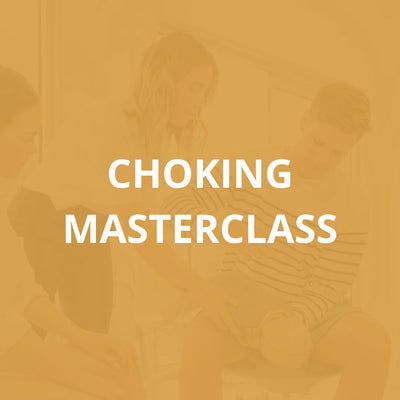What you need to know about car seat safety
Keeping our little loves safe comes in many forms. Whether it is holding hands to cross the road or ensuring helmets are on whenever they ride their bikes and scooters.
One of the most important things we can do to ensure our little ones are safe is to have the best possible protection when they are travelling in a vehicle. Motor vehicle accidents are one of the leading causes of childhood death in Australia.
Extensive research shows children who are incorrectly restrained in a vehicle are up to seven times more likely to be seriously injured in a car accident than a child correctly restrained in a size appropriate seat. Adding to this, there are now recommendations to rear face your child’s car seat until they have outgrown it for extra protection.
A follower Bailey* wrote to us expressing concern about a nearly tragic car accident that happened to them. Thankfully they did their research and kept their little one rear facing, that essentially saved her from serious and possibly fatal injuries.
Bailey's story
Their car was hit on the driver’s side at 70km/hr in rural Victoria. Bailey was driving and was trapped in the car with the other passenger sustaining significant whiplash and bruising. Thankfully their daughter Charlie had no physical injuries, to which emergency services and the emergency department doctor told them that if Charlie were forward facing, she would have sustained a significant head injury. They also had their car seat properly installed by a certified installer.
Rear facing – the best protection for our little loves
By law a child aged under 6 months should travel in a rear facing seat, however extensive evidence now suggests that rear facing children until they have outgrown their rear facing restraint is the best possible protection we can offer them while travelling in a car.
Why?
Kidsafe states best practice for children is to have them rear facing until they reach the maximum size limit stated on the car seat, this could be up to age 4 depending on their size. Rear facing restraints provide the necessary and essential head and neck support a child needs to protect them in the event of an accident or even hard braking. Forward facing our children too early increases the risk of spinal and neck injuries in motor vehicle accidents due to the lack of head support.
Infants have relatively large heads and weak necks, which puts them at high risk of serious injuries.
A study in the USA discovered that rear facing one to two year old children are 5 times safer than forward facing.
Other things we can do
Road accidents are one of the leading causes of childhood death in Australia. Let's protect our kids.
-
Have them travelling in the safest place for them in the car- which is the back row for children under 12.
-
Ensure they are in the correct car seat for their SIZE, only change car seats when your child becomes too big rather than by age. You can check this with the shoulder marker on all car seats.
-
Use rear facing car restraints as long as they can for their size, not age.
-
Once too big for rear facing, use an inbuilt harness for as long as it fits.
-
Once your child is too tall for a forward facing child restraint use a booster with a lap-sash belt until they are able to fit properly in an adult seat belt. Do the 5 step test to check this.
-
Regularly check your car seats to ensure it is still installed correctly and nothing has come loose and that it is correctly fitted for your growing child.
-
Ensure the seatbelt and top tether is buckled up and firm, with no twists.
-
Check the date- Child car seat restraints should not be used if over 10 years old.
-
Always buckle up. Any restraint is preferable over not using a restraint at all.
Lastly, it’s important to correctly fit your seats.
As many as 70% of car restraints are fitted incorrectly, posing a serious threat to those using it. Kidsafe Victoria run a program that offers free child car restraint and booster fittings and checks. Go onto the Kidsafe website and book it in with your local Neighbourhood houses Victoria group.
It is free and easy. Follow the link below:
https://safeseatssafekids.com.au/
As we learn new ways to protect our children it is important to be informed and make the right decision for your individual circumstances. Travel safely and remember the way you drive also keeps them safe.
These are links to the new care seat safety guidelines and checklist which you may find helpful as well.
Brochure and checklist
https://www.neura.edu.au/wp-content/uploads/2021/03/file.pdf
Key changes to national best practice guidelines
https://www.neura.edu.au/wp-content/uploads/2021/03/BPG-Top-5-changes.pdf
Written by Laura, a Paediatric Emergency Nurse and mum of two little loves. As always, information on this website is for educational purposes only.
Please consult your GP for information specific to your child.
References
Raisingchildren.net.au
kidssafevic.com.au
www.Kidsspot.com.au
kidshealth.org
Vicroads.vic.gov.au
www.neura.edu.au
The quick thinking of Warrnambool parents Lucy and Pat Mahony saved their 18-month-old son Ollie from serious scars for life after he pulled a cup of coffee onto himself.
How do I check my baby’s temperature? 🤒 What is the best way to check a baby’s temperature? There are so many different types and brands of thermometers out there. What thermometer should I buy?
We're here to answer all your questions!
When our little loves are in pain, we want nothing more than to help them. This guide discusses common pain reliving medications that we can use to help alleviate their pain, as well as when and why we use them.









